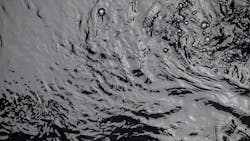About the author:
Cristina Tuser is associate editor for Water & Wastes Digest. Tuser can be reached at [email protected].
What is Effluent?
Effluent is sewage that has been treated in a septic tank or sewage treatment plant. It is also referred to as “trade effluent” or “wastewater.”
Effluent is waste other than waste from kitchens or toilets, surface water or domestic sewage. It can be produced and discharged by any industrial or commercial premises. Effluent usually flows from the premises directly into the main sewer network and it cannot enter a river, reservoir, stream or lake unless it is cleaned and treated first.
Effluent usually contains one or more contaminants including:
- Fats, oils and greases (FOGs);
- Chemicals;
- Detergents;
- Heavy metal rinses;
- Solids; and
- Food waste.
Wastewater Treatment
The goal of wastewater treatment is to remove as much of the suspended solids as possible before the effluent is discharged back to the environment. Primary treatment removes about 60% of suspended solids from wastewater, according to USGS, and secondary treatment removes more than 90% of suspended solids.
RELATED: What is Biological Oxygen Demand (BOD)?
EPA Effluent Guidelines
Effluent Guidelines are national regulatory standards for wastewater discharged to surface waters and municipal sewage treatment plants, according to the U.S. EPA. The EPA issues these regulations for industrial categories, based on the performance of treatment and control technologies.
Industrial Effluent
Industrial effluent discharged from process and manufacturing plants must meet stringent regulatory standards. These standards are designed to protect surface and groundwater resources.
There are six challenges shaping the future of effluent treatment, including:
- Decreasing operational costs;
- Optimizing to improve efficiency;
- Stricter environmental regulations;
- Water scarcity & the push for reuse;
- Changing technology; and
- Subproduct recovery.
Many facilities produce sludge in their effluent treatment plants as a byproduct and if properly dewatered, it potentially can be used as a soil additive to fertilizer.
